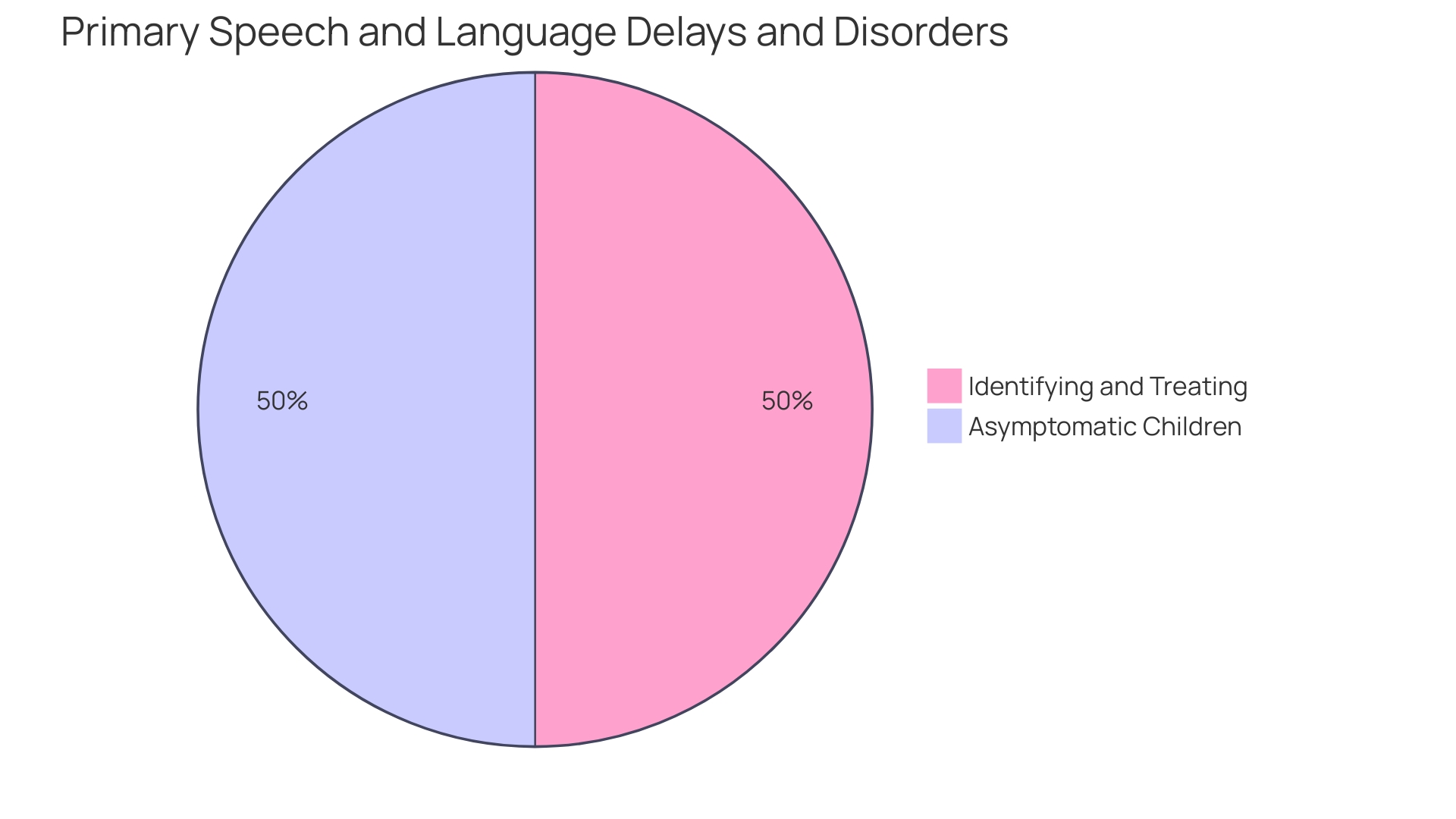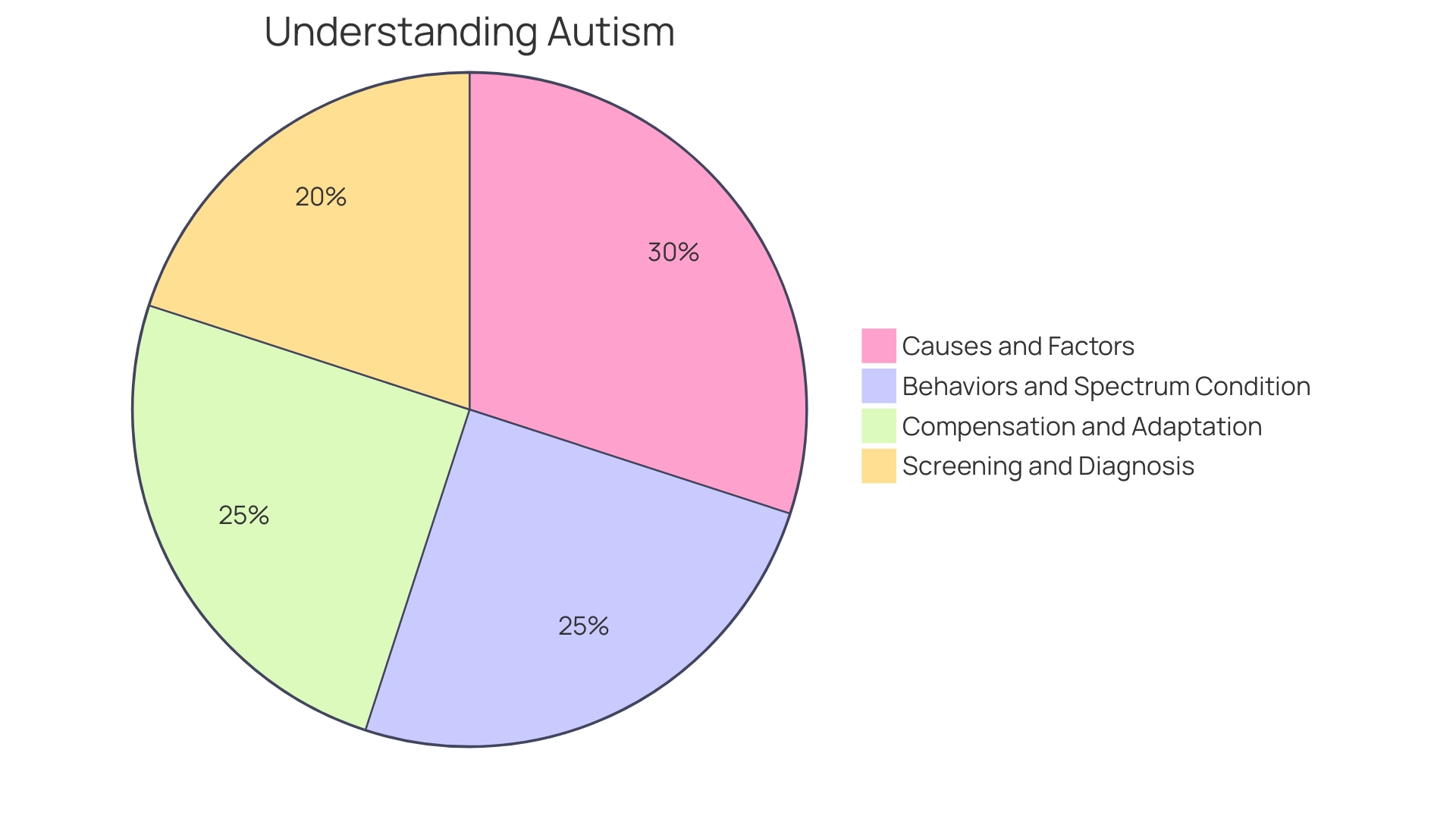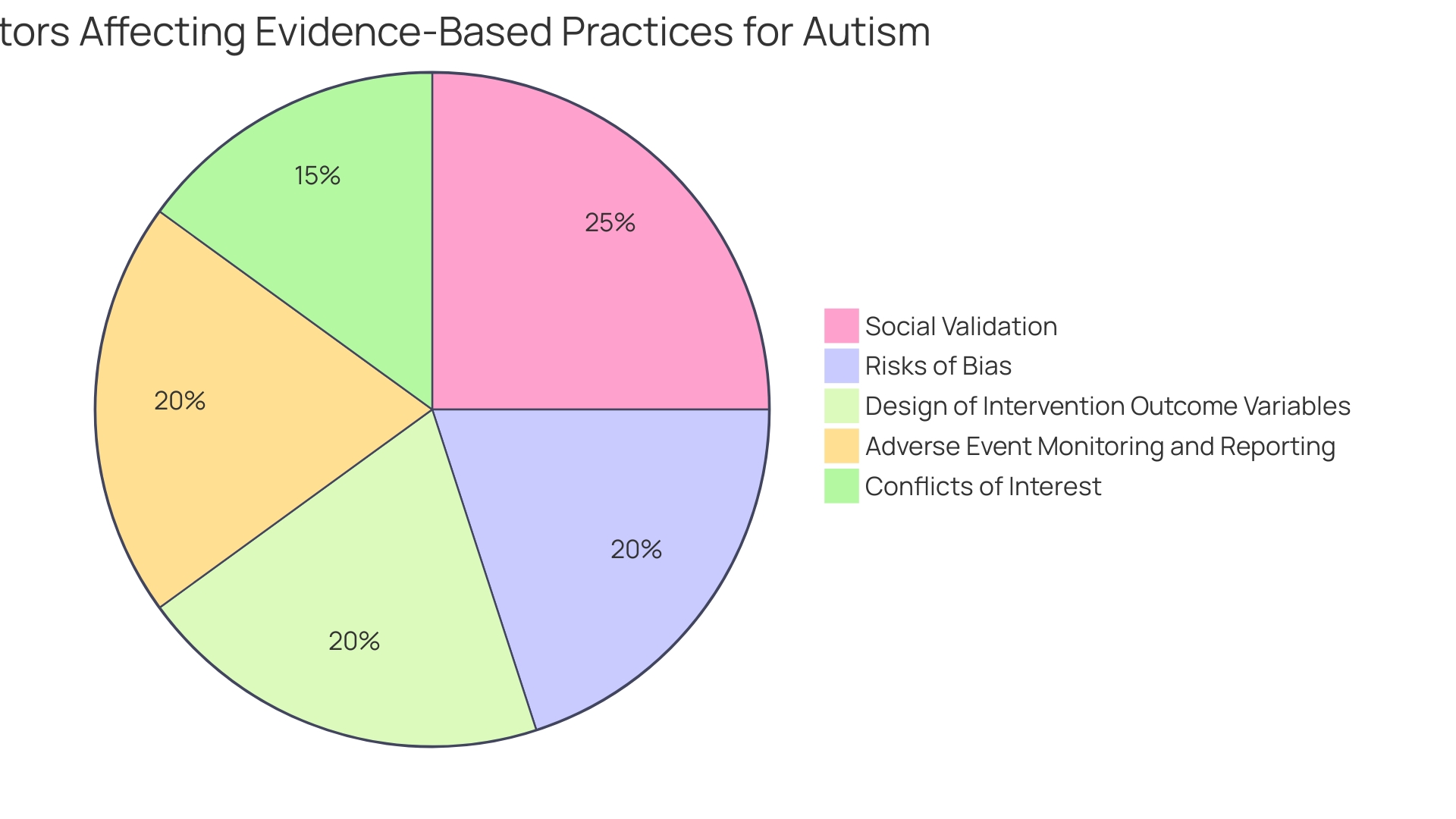Introduction
Autism Spectrum Disorder (ASD) is a complex neurodevelopmental condition that affects individuals differently, displaying a spectrum of behaviors. While the core symptoms include differences in communication, social interactions, and patterns of behavior, ASD manifests uniquely in each person. Early detection is crucial, as diagnosis may not occur until later in life.
The CDC estimates ASD to occur in up to 1 in 36 individuals, highlighting the need for accessible diagnostic tools and support systems. Genetic factors play a key role in autism, and debunked misconceptions regarding its causes emphasize the importance of equitable healthcare access and diagnosis. Early diagnosis significantly impacts an individual's access to resources and opportunities for a fulfilling life.
This article explores the early signs of autism in infants and toddlers, the importance of early screening and diagnosis, and support strategies for early intervention. By providing guidance and resources, we aim to empower parents to navigate challenges and ensure the well-being of their children.
What is Autism Spectrum Disorder (ASD)?
Autism Spectrum Disorder (ASD) is a complex neurodevelopmental condition displaying a spectrum of behaviors and affecting individuals differently. While the core symptoms include persistent differences in communication, social interactions across varied environments, and restricted, repetitive patterns of behavior, ASD manifests uniquely in each person. Clinicians use the American Psychiatric Association’s DSM-5 as guidance to diagnose ASD, focusing on the child's developmental history and behavior.
However, due to its nature, some individuals may not be diagnosed until later in life, underscoring the importance of early detection. The CDC estimates ASD to occur in up to 1 in 36 individuals, highlighting the need for accessible and equitable diagnostic tools and support systems. Early diagnosis can significantly impact an individual's access to resources and opportunities to lead a fulfilling life.
Despite the lack of a single known cause for Autism, research points to genetic factors as a key component. Brain structure and function differences have been observed in individuals with ASD compared to neurotypical development. Misconceptions, such as vaccines or parenting style causing Autism, have been debunked.
Instead, patterns in families suggest a genetic predisposition to ASD. This is further exemplified by a case study involving 4-year-old dizygotic twins with level 3 severity ASD, requiring substantial support. The twins' diagnosis at twenty months emphasizes the genetic variance, as they did not share identical genetics.
Equity in healthcare access and diagnosis is a pressing issue, as children from minority, low-income, and rural backgrounds are disproportionately diagnosed with ASD later than their peers. This delay can lead to disparities in receiving critical early interventions. Clinician resources and new diagnostic tools, such as objective biomarker-based technologies, are hoped to bridge this gap and improve early diagnosis rates, thus enabling better support and outcomes for those affected by ASD.
Early Signs of Autism in Infants (0-12 months)
Detecting autism in its early stages is crucial for leveraging therapeutic interventions when the brain's capacity for change is at its peak. The first year of life presents a window of opportunity where certain behavioral signals indicative of autism may emerge. These can include a noticeable reduction in eye contact, diminished social engagement, delays in typical vocalizations such as babbling, and fewer expressions of interest or enjoyment in social interactions.
Recognizing these early indicators is essential for parents and caregivers.
To enhance early detection, researchers are advocating for more precise and efficient assessment tools. Eye-tracking technology, for example, offers quantifiable insights into the developmental trajectory of autism by measuring visual attention patterns. Studies utilizing this approach have demonstrated that it can predict diagnostic outcomes with a high degree of accuracy, as endorsed by Warren Jones, PhD, of the Marcus Autism Center.
The importance of such advancements is underscored by the limitations of current screening methods. The Modified Checklist for Autism in Toddlers-Revised with Follow-Up (M-CHAT-R/F), a tool used during routine pediatric visits, exhibits diminished reliability outside of controlled research environments, particularly for certain demographics. In primary care settings, its sensitivity is relatively low, with a positive predictive value of just 14.6%.
This gap in screening effectiveness points to the need for more objective and universally applicable tools.
The urgency for accurate early diagnosis is not overstated. As research progresses, understanding the interplay between genetic predisposition and environmental factors becomes more crucial. The real-time dynamics between these elements can determine when and how autism symptoms manifest, leading to a call for early intervention for optimal outcomes.
Early diagnosis not only has the potential to improve the quality of life for individuals with autism but also to address the developmental disparities that can affect long-term independence and well-being.

Signs of Autism in Toddlers (12-36 months)
As toddlers grow, nuanced symptoms of autism spectrum disorder (ASD) can surface, such as social engagement challenges, speech delays, repetitive behaviors, and resistance to changes in routine. Early detection and intervention are crucial, not just for the support they provide but for leveraging the brain's adaptability during these formative years. According to the DSM-5, diagnosis hinges on the observations of both caregivers and healthcare professionals, with no single diagnostic tool being definitive.
Specialized practitioners, including neurodevelopmental pediatricians and child neurologists, play an integral role in identifying ASD through comprehensive assessments.
Emerging technologies, such as eye-tracking, are transforming the diagnostic landscape by pinpointing early signs of autism with impressive accuracy rates of up to 98.5%, as reported by JAMA. These advancements hold promise for earlier interventions, which are vital as every year over 90,000 children in the U.S. alone are born with autism. With the stakes so high, it's imperative for caregivers to stay informed about the latest research and treatment options, carefully weighing the benefits and risks of proposed therapies.
It's a continuous learning journey, with the goal of moving from merely surviving to thriving, empowering every child with autism to reach their full potential.

Importance of Early Screening and Diagnosis
Understanding that autism spectrum disorder (ASD) manifests through challenges in communication, social interactions, and behavioral patterns, early identification is vital for embarking on the path to effective support. Screening tools like the Modified Checklist for Autism in Toddlers (M-CHAT) are instrumental in spotting early indicators of autism, enabling healthcare practitioners to guide children towards crucial evaluations and interventions.
A recent 6-site study involving 496 children aged 16 to 30 months referred for specialized assessment highlighted a sobering reality: nearly one-third of autism diagnoses lacked certainty. The ambiguity surrounding diagnosis can delay the initiation of behavioral therapies known to enhance language, cognitive, and social abilities.
Innovative research efforts are advancing our understanding of ASD's complexity. For example, Dr. Kristiina Tammimies from the Karolinska Institutet has contributed to developing 'AutMedAI', a machine-learning model that, by analyzing a blend of 28 parameters, can identify ASD with about 80% accuracy in children under two. Furthermore, the Marcus Autism Center's exploration into 'social visual engagement'—how children interact with and learn from social cues—has given rise to a new biomarker technology, potentially revolutionizing the early detection of autism.
With the support of Bernie Marcus' philanthropy and the diligent work of researchers like Dr. Warren Jones and Dr. Ami Klin, this technology, informally dubbed 'the Marcus Test', is set to enhance the timeliness of interventions.
The intricate dance between genetic predispositions and environmental influences shapes the onset of ASD. Researchers like Dr. Robert Naviaux are unlocking the dynamics governing the transition from risk factors to the manifestation of ASD symptoms, emphasizing the life-altering potential of early intervention. The developmental trajectory of children with autism underscores the urgency for early detection: while a small percentage may lead independent lives as adults, the majority face significant challenges.
Thus, the pursuit of early and accurate diagnosis is not just a medical imperative but a beacon of hope for families navigating the complexities of autism.

Support Strategies for Early Intervention
To nurture the full potential of children with autism, early and personalized intervention is essential. Techniques such as Applied Behavior Analysis (ABA), speech therapy, occupational therapy, and social skills training are not mere strategies; they are lifelines that can significantly improve communication, socialization, and practical skills. By partnering with a dedicated team of professionals, parents can create a tailored plan that resonates with their child's distinct needs, facilitating their inclusion in all aspects of life, from school to home to play.
Supporting children with autism demands an understanding of both the challenges and strengths they possess. As emphasized by Dr. David (Dan) R. Offord, ensuring 'the race is fair' for children with disabilities is pivotal to their mental health and to building a society rooted in equity. This commitment means acknowledging the unique contributions these children make and minimizing the chronic stressors they face.
By equipping caregivers with the necessary resources, we can foster an environment where children with autism are not left behind but are encouraged to thrive in their communities.
Recent shifts in autism research underscore the importance of evidence-based interventions. Clinicians now rely on randomized controlled trials over quasi-experimental studies to make informed decisions about treatments, reflecting a more rigorous scientific approach to supporting individuals with autism and their families. This evolution in research methodology enhances our ability to choose effective interventions and adapt to new findings.
The Autism Community in Action (TACA) reinforces the notion that treatment outcomes are most favorable when initiated early. Innovative organizations like NeuroQure are striving to bridge the diagnostic gap, offering hope for early identification and intervention to families, potentially transforming the lives of those with autism from infancy onwards. The message is clear: autism is treatable, and the journey towards addressing it begins with prompt and accurate diagnosis.
Continuous learning about the latest in autism research is a responsibility shared by caregivers and professionals alike. It is vital to discern the validity of information, especially in an age where the internet is awash with both helpful insights and misleading narratives. By engaging with experts and staying abreast of new therapeutic approaches, we empower ourselves to make informed decisions regarding the well-being of children with autism, always with an eye towards treatments that are not only promising but also safe.

Conclusion
In conclusion, Autism Spectrum Disorder (ASD) is a complex condition that affects individuals differently. Early detection is crucial, as diagnosis may not occur until later in life. The CDC estimates ASD to occur in up to 1 in 36 individuals, highlighting the need for accessible diagnostic tools.
Genetic factors play a key role in autism, emphasizing the importance of equitable healthcare access.
The article discussed the early signs of autism in infants and toddlers, emphasizing the importance of early screening. Advanced assessment tools like eye-tracking technology provide valuable insights into autism's developmental trajectory. Early detection and intervention during the formative years are vital for optimal outcomes.
Early screening and diagnosis are essential for effective support. Tools like the Modified Checklist for Autism in Toddlers (M-CHAT) help identify early indicators, guiding children towards evaluations and interventions. Innovative research, such as machine-learning models and biomarker technologies, contribute to more accurate diagnoses.
To nurture the potential of children with autism, early and personalized intervention is crucial. Techniques like Applied Behavior Analysis (ABA), speech therapy, occupational therapy, and social skills training significantly improve communication and socialization. Supporting children with autism requires a commitment to equity and minimizing chronic stressors.
In conclusion, by recognizing early signs, advocating for early screening, and implementing support strategies, parents can navigate the challenges of ASD and ensure their children's well-being. Empowering parents with knowledge and resources is key to providing the best possible support for their children's development and future success.




